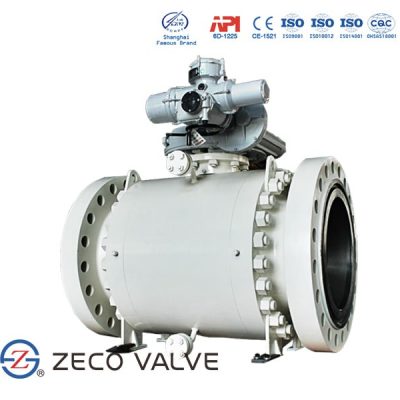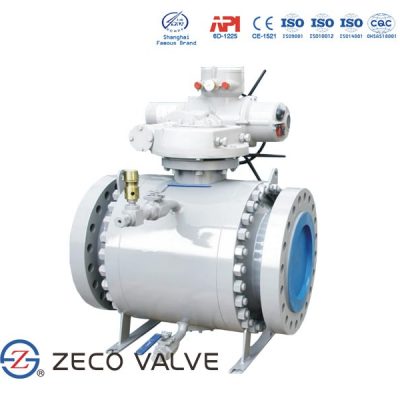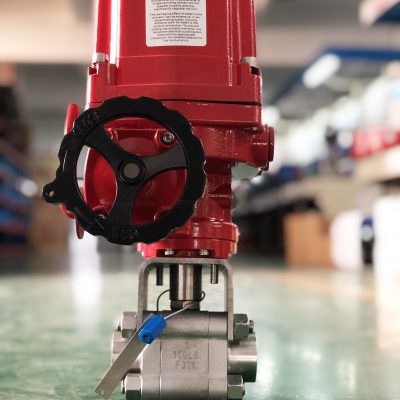Electric Ball Valves are two-way(two ports or two openings) quarter-turn ball valves. The motorized ball valves here are not for regulating flow, they can be fully opened or fully closed automatically receiving a control signal.
What is an Electrically Actuated Ball Valve?
Electrically actuated valves use electric actuators to drive them open and closed. Electric valve actuators typically convert high-speed low torque output motors into low-speed high rotary torque output that drives the valve via a gearbox.
Electric ball valves use part-turn rotary electric actuators because the working angle of a ball valve is typically 90 degrees, and are very popular as electric actuated ball valves can offer a cost-effective solution for valve automation. They are available in a wide range of materials, pressure classes, and end connections
Ball valves are often automated with pneumatic or electric actuators. This allows remote operation for a variety of reasons: savings in labor, plant safety, product quality assurance, and automatic sequencing. The choice of actuator type depends on many factors, including the availability of air supply, cycling requirements, condition of the environment, compatibility with the type of control operation, and cost. Positioners may be mounted on these valves if flow control is required.
Ball Valve Types
Electrically actuated 2-way ball valves are a simple solution for many basic on/off applications. They rotate 90 degrees (quarter-turn) from fully open to fully closed. While they typically operate more slowly than valves with an air-operated pneumatic actuator, it is often the case that electricity is available and compressed air is not. Electric ball valves come in many different materials which are listed below.
Electric Actuator Types
There are many different types of electric actuators available, each with its own advantages and disadvantages. Most work with a geared drive train and a reversing motor with limit switches that stop the motor in each direction. Some offer feedback via electrical signals for lighting indicator lamps or even monitoring the exact position of the valve. Electric actuators also come in a variety of enclosure styles from low-cost and lightweight to heavy-duty and explosion-proof. Explosion-proof does not mean that they will withstand an explosion. It means that it will contain any sparks that would cause an explosion in a hazardous location where there are ignitable fumes or vapors.
Electric Ball Valve vs Manual Ball Valve
Motorized ball valves operate in a similar fashion as manual ball valves. A ball set in the body of the valve has a hole in the center which controls the flow. An open ball valve will have the bore/hole in line with the flow. Turning the ball perpendicular will close the valve and stop the flow of media. An electrically actuated ball valve has a motor that does the turning for you.
The main benefits of an actuated ball valve are programmability and convenience. These valves can be set up to work with a variety of automated systems to cloud-based infrastructure. At the flip of a switch, the valves can open and close without needing to physically be near the valve itself.
Advantages of Motorized Ball Valves
- Work well with large volumes of flow
- Greater Cv value than solenoid valves
- Can be run in automated systems
- Affordable valve type
- Easy to install
- Lower operating costs than solenoid valves (does not require power once the ball is in the desired position)
- Not prone to burning out like solenoids
- Anti-water hammer





